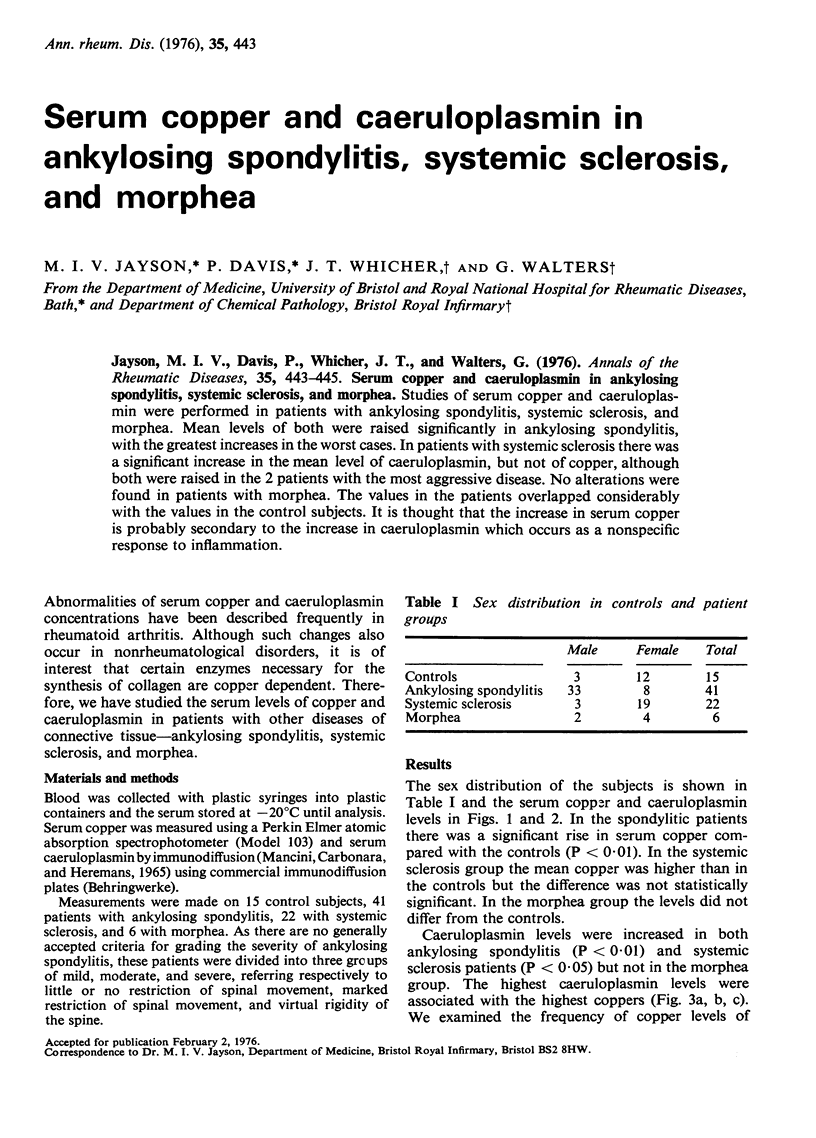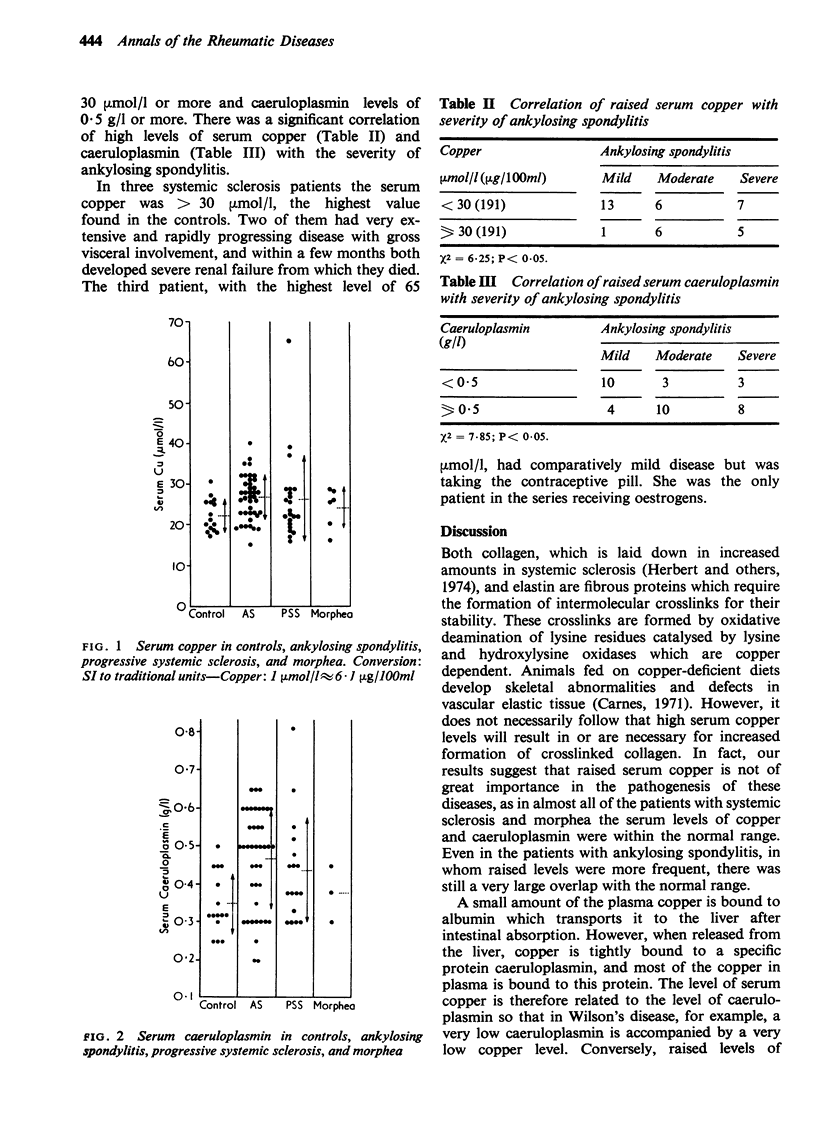Abstract
Jayson, M. I. V., Davis, P., Whicher, J. T., and Walters, G. (1976).Annals of the Rheumatic Diseases, 35, 443-445. Serum copper and caeruloplasmin in ankylosing spondylitis, systemic sclerosis, and morphea. Studies of serum copper and caeruloplasmin were performed in patients with ankylosing spondylitis, systemic sclerosis, and morphea. Mean levels of both were raised significantly in ankylosing spondylitis, with the greatest increases in the worst cases. In patients with systemic sclerosis there was a significant increase in the mean level of caeruloplasmin, but not of copper, although both were raised in the 2 patients with the most aggressive disease. No alterations were found in patients with morphea. The values in the patients overlapped considerably with the values in the control subjects. It is thought that the increase in serum copper is probably secondary to the increase in caeruloplasmin which occurs as a nonspecific response to inflammation.
Full text
PDF


Selected References
These references are in PubMed. This may not be the complete list of references from this article.
- Bajpayee D. P. Significance of plasma copper and caeruloplasmin concentrations in rheumatoid arthritis. Ann Rheum Dis. 1975 Apr;34(2):162–165. doi: 10.1136/ard.34.2.162. [DOI] [PMC free article] [PubMed] [Google Scholar]
- Carnes W. H. Role of copper in connective tissue metabolism. Fed Proc. 1971 May-Jun;30(3):995–1000. [PubMed] [Google Scholar]
- Hansson L., Huunan-Seppälä A., Mattila A. The content of calcium, magnesium, copper, zinc, lead and chromium in the blood of patients with rheumatoid arthritis. Scand J Rheumatol. 1975;4(1):33–38. [PubMed] [Google Scholar]
- Herbert C. M., Lindberg K. A., Jayson M. I., Bailey A. J. Biosynthesis and maturation of skin collagen in scleroderma, and effect of D-penicillamine. Lancet. 1974 Feb 9;1(7850):187–192. doi: 10.1016/s0140-6736(74)92494-5. [DOI] [PubMed] [Google Scholar]
- Maddox I. S. The role of copper in prostaglandin synthesis. Biochim Biophys Acta. 1973 Apr 13;306(1):74–81. doi: 10.1016/0005-2760(73)90210-5. [DOI] [PubMed] [Google Scholar]
- Mancini G., Carbonara A. O., Heremans J. F. Immunochemical quantitation of antigens by single radial immunodiffusion. Immunochemistry. 1965 Sep;2(3):235–254. doi: 10.1016/0019-2791(65)90004-2. [DOI] [PubMed] [Google Scholar]
- McMurray W., Martin V. M., Scudder P., Stocks J., White A. G., Dormandy T. L. Urinary copper excretion in rheumatoid arthritis. Ann Rheum Dis. 1975 Aug;34(4):340–345. doi: 10.1136/ard.34.4.340. [DOI] [PMC free article] [PubMed] [Google Scholar]
- Niedermeier W., Griggs J. H. Trace metal composition of synovial fluid and blood serum of patients with rheumatoid arthritis. J Chronic Dis. 1971 Jan;23(8):527–536. doi: 10.1016/0021-9681(71)90128-7. [DOI] [PubMed] [Google Scholar]
- SCHEINBERG I. H., STERNLIEB I. Copper metabolism. Pharmacol Rev. 1960 Sep;12:355–381. [PubMed] [Google Scholar]


